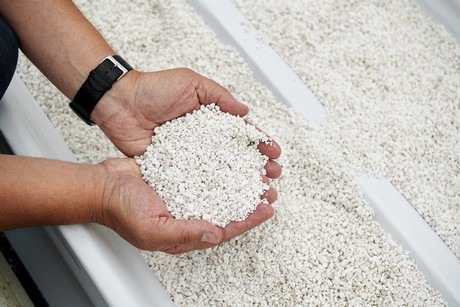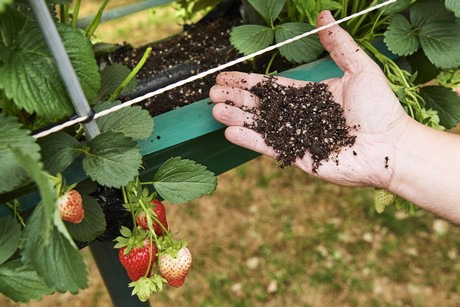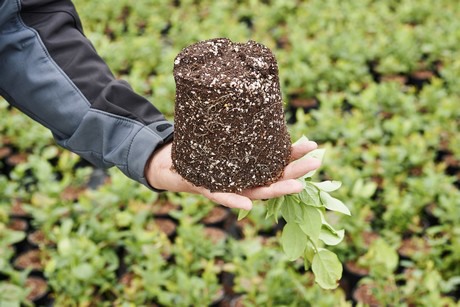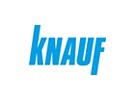These days, more and more professionals and end customers are demanding peat-reduced substrates. The mineral substrate Perligran is an additive to ensure good results together with peat substitutes. It is a way to create a substrate with good drainage and good aeration – all with a lower weight. In addition, Perligran is certified according to stringent Dutch quality standards (RHP) and is included on the FiBL list in Germany and Switzerland.
Many substrate manufacturers – who often also extract their own peat – are currently facing a changing market. Not just environmental groups, but increasingly large chain stores such as REWE are also demanding ever greater quantities of peat-reduced substrates for the cultivation of decorative plants, fruit and vegetables.

The downsides to peat substrates
Manufacturers are embracing this trend and increasingly turning to peat substitutes for the production of peat-reduced substrates such as compost and bark humus. But these organic materials present manufacturers with new challenges as they are both very heavy and contain a high amount of fine particles. Longer periods of use result in the substrate’s developing a very fine and mushy structure, preventing the soil from aerating adequately. Yet plants need an oxygen level of over 15% in order to develop new roots.
Use Perligran for the perfect mix
A mineral additive is the right solution for tackling this challenge. Perligran is based on natural perlite, a volcanic material, which has a perfect water of crystallisation content and enormous expandability. The fine particles are first sieved out during production, giving the additive a uniform and porous structure. Depending on the grain size and sieving procedure, 85% to 95% of the additive remains in the substrate and retains its shape. This results in high capillary action, good drainage and pore volumes that create favourable growing conditions for plants in the long term. The weight of the peat-reduced substrate is lowered, making the product even easier to use.

Adapted to a wide range of uses
Many substrates containing peat substitutes can be used successfully today – also thanks to Perligran. Perligran achieves outstanding results in a wide variety of other areas. It is used as a pure medium in the cultivation of cut flowers and vegetables and as a mineral substrate additive in high-grade substrates for professional, special and hobby purposes. It is experiencing growing popularity particularly for the cultivation of berries and soft fruits thanks to its guarantee of keeping roots dry and not too cold.

Perligran is available in four varieties – Classic, Medium, Extra and Premium. There is also an additional variety, Perligran Organic, which is coloured brown instead of white using natural and organic-compliant humic substances, making it a more attractive solution for end consumers and gardeners in horticulture. Perligran provides an ideal basis for the successful cultivation of flowers, fruit and vegetables – with guaranteed quality and certified according to stringent Dutch quality standards (RHP). It is also included on the Swiss and German FiBL lists as a soil additive for organic agriculture.
For more information: Knauf
Knauf
www.knauf-aquapanel.com
